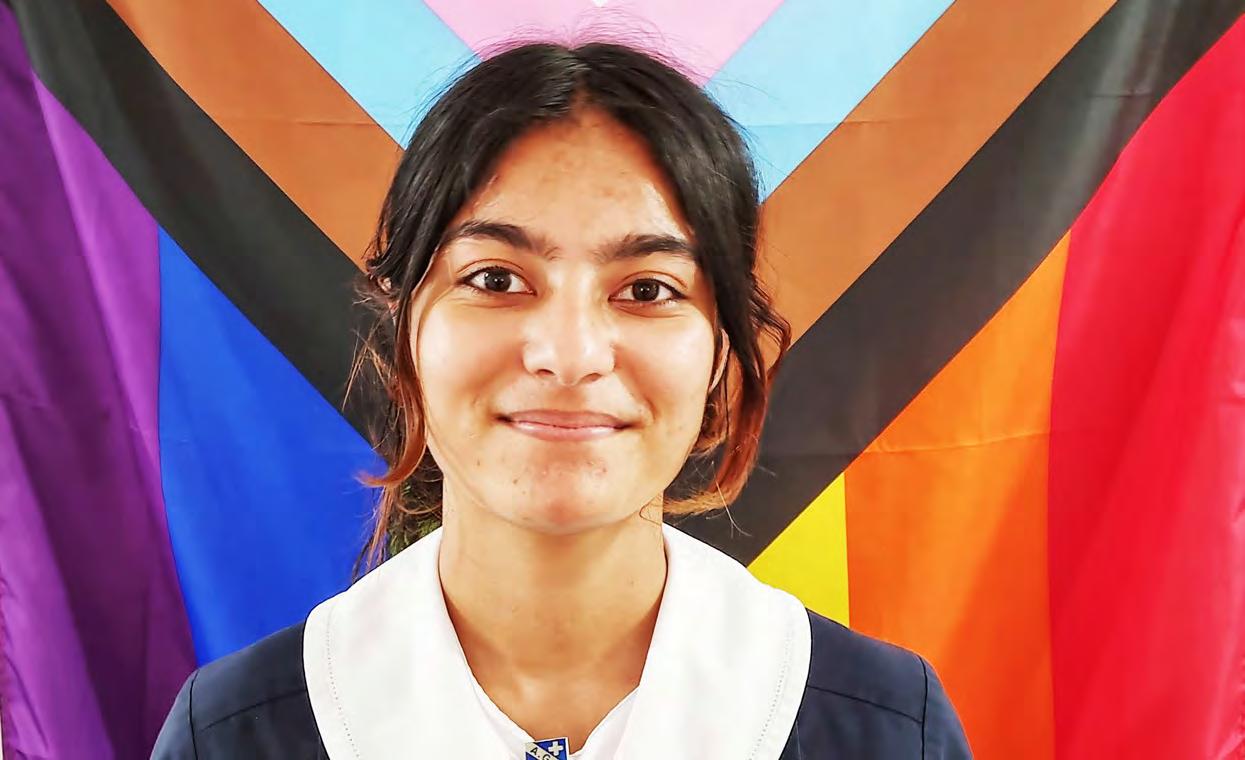
6 minute read
A Commitment to Cultural Safety & Inclusion
By Mr Nick Hately, Head of Trinity College, SA
As an Anglican school, Trinity College’s values are founded on Christian teaching and tradition. Our community engagement, positive social impact and uplifting educational opportunities are all key components of our operations, as we actively seek to live our mission of being genuinely open to all.
Every school has its own beliefs and values and as a College, we recognise the platform and responsibility we have to deliver inclusivity. We have made a commitment to continuing conversations and learning using our resources to connect members of our community. We display a dedication to diversity and inclusion across all facets of our College and this year, the Trinity College Cultural Safety and Inclusion Enrichment Plan was established. Built via community engagement this plan looks to build dignity and respect for all people. Our goal is for inclusion, diversity, belonging and flourishing to be synonymous with the faith dimension of our College.
The Cultural Safety and Inclusion Enrichment Plan was borne from the College’s determination to build on our commitment to diversity and inclusion and, to constantly seek improvement and growth. The plan looks to build dignity and respect for all people regardless of their gender, ethnicity, faith, sexual orientation or ability. Our Chaplaincy team, board members, staff, students and community leaders have all contributed to lend their expertise to this unifying plan. The plan influences everything from culture to policy and underpins our community engagement. The plan aims to support inclusivity across our College and in the broader community, including increasing opportunities and acknowledgement for all students, staff, volunteers and supporters regardless of their background.
Cultural safety and inclusion as recognised within the plan include religious tolerance and understanding, gender equity, First Nations, multicultural, LGBTQ+ and people with disability or special needs.
The Trinity College Cultural Safety and Inclusion Enrichment Plan builds on the College’s Reconciliation Action Plan which is being further developed to build a culture of equity, respect and recognition of the cultures, histories and contributions of Aboriginal and Torres Strait Islander peoples as the First Australians and to stand as a beacon to the community around us. Diverse perspectives will be sought to ensure lived experiences inform these action items.

A student perspective Sparking Change

By Kaira Wang, Year 11 | St Aidan’s Anglican Girls’ School, QLD
Year 11 student Kaira Wang was recently awarded a Spark Award from Griffith University. The Award allows schools to acknowledge a Year 11 student who is doing the things that matter to create a brighter future in one of four areas. Kaira’s award is for making a difference through diversity and inclusion and respect for all people. Here is her reflection.
The Spark Award recognises my willingness to name an important issue and address it. My leadership has been in the areas of inclusion and diversity, particularly improving LGBTQI+ students’ experience at school, and in the field of social justice by encouraging conversations about mental health.
For me, inclusion looks like everyone having a safe space, knowing that who they are won’t get them bullied or judged in the playground or the classroom. It also means that we learn to hold diverse opinions without letting our ideas hurt other people, or thinking we have the right to tell others how to live their lives, even if this sacrifices some of our personal freedom. All people need to be heard on the issues that affect them, but sometimes it can be hard for young people to feel they have a voice.
A couple of years ago, our school held its very first Pride assembly, inviting a transgender Anglican priest to school to talk about her experience as part of the LGBTQI+ community. That was a highlight for me because I came from China where I couldn’t even post a pride flag online, but here was a pride flag in assembly! While that made us feel safer about the school’s leadership, we did encounter some backlash from other parts of the school community. We have come a long way since then. Now, seeing people wearing pride badges at school, tells me the school community has my back. This year students told me our Pride assembly could have been even more Pride! I hope to see it become a tradition, and for our school to always be a place where queer students can be heard and feel empowered. While LGBTQI+ inclusion is going well, we still need more cultural, racial and disability inclusion. I think we can learn from our Pride experience in giving student voices priority and strive towards becoming more and more inclusive. This will give us a greater range of perspectives. I think one of the strengths of St Aidan’s is that we have a small enough community that inclusion is much more visible. People aren’t lost in the crowd, so we can see them in all their diversity. We can see how beautiful everyone is.
A student perspective Inclusion Means Everyone

By Lila De Sena, Year 8 | John Wollaston Anglican Community School, WA Inclusivity is something you become aware of as soon as you attend your first day of school. You see that everyone around you is becoming fast friends with one another, and you wonder where you fit in or if you do fit in. I felt exactly like this during my first days of school, and I can imagine my peers felt the same. Luckily, I was invited to play by everyone, and we all enjoyed doing the sorts of activities you would expect little kids to like (playing in the sand pit, riding on scooters and the list goes on…).
At John Wollaston, I have always felt included. Though I am mixed race and a girl, I have never felt like an outsider or someone who didn’t belong. My friends and teachers have always seen me for who I am on the interior, not the exterior. It is saddening that at some schools, students are made to be excluded by their peers or even by staff. That is why inclusion is such an important trait in a school community and one I think that John Wollaston can be celebrated for.
There are so many examples of inclusion at John Wollaston that have taken place just this year. For example, through our chaplain, a group for LGBTQI+ identifying students was formed to help provide a forum for discussion around issues specific to them and to talk about their experiences. We also celebrated International Women’s Day and NAIDOC Week. Personally, I believe the greatest example of inclusion at John Wollaston is our diverse school body. There are students of all ethnicities, religions, genders, and ability at John Wollaston. Being able to see all these different people from unique walks of life creates an environment of acceptance and therefore, inclusion.
Inclusion is fundamental to creating a sense of community and belonging. It is the difference between spending recess alone and finding people who might become your closest friends. By being inclusive, you are showing someone that they are valued and that you respect them regardless. When you are welcome at school, it gives you comfort in yourself and a foundation for your future.





